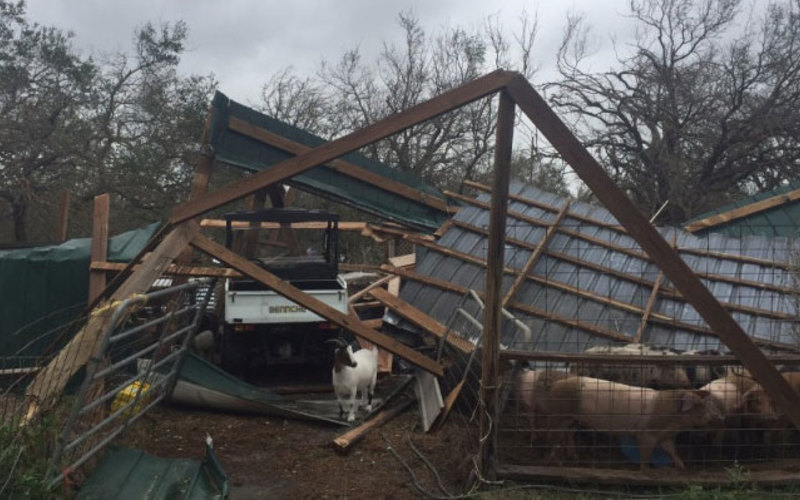Now that the flood waters are beginning to recede in some parts of Texas, attention is being turned to the environmental consequences that Hurricane Harvey has left in its wake. More research, studies, and stories will surely be published in the coming weeks and years, but for now, here’s what we know:
- Explosions at a chemical plant in Crosby, Texas – Several explosions have been reported at the plant after flooding shut down its refrigeration systems. Residents were all evacuated in advance, but as the Texas Tribune reports, a group of first responders are now suing the chemical plant. The police officers and medical personnel involved in the lawsuit say that when they first arrived at the plant, they were not told that one explosion had already taken place. They also allege that the fumes made them throw up and gasp for air. Company officials on the other hand, have described the fumes as a “non-toxic irritant” and Harris County officials likened it to the smoke from a campfire.
- Huge amounts of debris and waste – Now that people are beginning to return to their homes, the question remains – what do they do with all their stuff? As the New York Times reports, Houston officials estimate that 8 million cubic yards of trash will need to be hauled away, both a difficult logistical feat and a major environmental concern. The cleanup is expected to take months and cost millions of dollars.
- Toxic pollutants – As the center of the US oil and gas industry, Houston is home to a wide array of chemical plants and oil refineries, many of which were damaged during the flooding. As the New York Times reports, high levels of the carcinogen benzene have been found in the low-income neighborhood of Manchester from the nearby Valero refinery. As Environment Texas reports, more than 2 million pounds of harmful chemicals have already been released into the air due to Hurricane Harvey.
- The effects of Hurricane Harvey will not be felt equally – As Reggie James (director of the Lone Star Chapter of the Sierra Club) points out in a recent blog post, Hurricane Harvey essentially hit many low-income neighborhoods and communities of color twice. Not only were their homes damaged by the flooding, but because of their close proximity to Houston’s chemical plants and refineries, their air was also polluted. Many also were faced with threats from immigration enforcement as they fled the Houston area. “It’s more important than ever to make clear that Hurricane Harvey is another unfortunate example of how the immigration and environmental movements’ concerns are intertwined,” James wrote. “The communities most threatened by Trump’s presidency — immigrants, communities of color, women — are the most vulnerable to toxic pollution and climate change. The struggles to protect our communities and our environment cannot be separated.”
How you can help:
- In order to ensure that the Hurricane Harvey recovery efforts are equitable, the Sierra Club has teamed up with affected communities to raise money. They’re asking people to create a fundraising page here>> Every dollar you raise will go toward groups working on the ground to mitigate the hurricane’s environmental effects—from chemical hazards to structural damage—and support urgent relief efforts.
- Many Texas farmers and ranchers also suffered severe damage to their property during the hurricane. The nonprofit organization Texas Center For Local Food is leading a fundraising effort to help support sustainable and organic family farmers and ranchers as they rebuild after the storm. You can donate here>>



